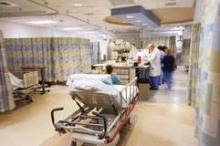An Affordable Care Act provision that allows adults aged 19-25 years to remain on a parent’s health plan appears to be helping to decrease the amount of uncompensated care in the emergency department, according to a study published May 29 in the New England Journal of Medicine.
In 2011, following the implementation of the ACA’s dependent care provision, private insurance plans took on an additional $147 million in costs associated with nondiscretionary emergency department (ED) care compared with 2009, before the provision took effect (N. Engl. J. Med. 2013;368:2105-12). Without the dependent care coverage requirement, some of these costs would have been uncompensated and could have caused increased financial losses for hospitals and emergency care physicians, according to the researchers.
The study suggests that the "ACA’s dependent coverage provision increased financial protection for young adults, their parents, and hospitals by sheltering them from the potentially catastrophic cost of treating emergency medical conditions," the researchers wrote.
The study, which is narrowly focused on increases in private insurance coverage among young adults seeking emergency care, comes as other studies have estimated that between 3% and 10% of young adults under age 26 have gained coverage under the law.
In an effort to capture data on true emergencies, the researchers analyzed only ED visits for serious, painful, and unpredictable conditions for which individuals would seek care regardless of their insurance status, such as bone fractures, dislocations, and appendicitis. They collected data on the study group – 19- to 25-year-olds – and a control group – 26- to 31-year-olds. Between Jan. 1, 2009, and Dec. 31, 2011, 483,562 ED visits by 19- to 31-year-olds fit the study criteria. The researchers then weighted the data using publicly available data to approximate a nationally representative sample of ED visits.
In 2011, there was a 3.1% increase in the share of nondiscretionary emergency department visits made by 19- to 25-year-olds that were covered by private insurance compared with the control group of 26- to 31-year-olds.
The dependent care coverage provision also led to an additional 22,072 nondiscretionary ED visits in 2011 versus 2009, which were paid for by private insurance plans.
The study was conducted by researchers from RAND, IMS Health, and the Department of Health and Human Services and funded by a contract with the office of the assistant secretary for planning and evaluation in HHS. The investigators analyzed data from the IMS Health Charge Data Master database, which includes unadjudicated insurance claims from a geographically diverse sample of 392 general hospitals in the United States.


